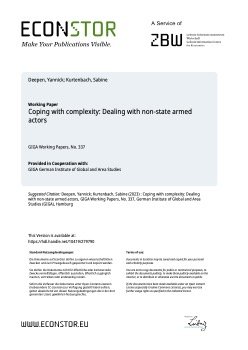By Europol
This report constitutes the first of a series of analytical products complementing the Global Study on Firearms Trafficking 2020, prepared by the UNODC Research and Trend Analysis Branch (RAB). The aim of the present report is to analyse illicit firearms trafficking and related forms of crime from a specific geographical angle, namely the European Union region, and to deepen the understanding of the illicit firearms trafficking situation in the region and its interconnection to the rest of the world. The report is based on the quantitative and qualitative data compiled by UNODC in the Illicit Arms Flows Dataset. To further enhance the evidence base on the phenomenon, this report complements the data from the Illicit Arms Flows Dataset with other qualitative and case-based data sources, in particular previously collected data by the Flemish Peace Institute, in addition to a review of existing literature on illicit firearms trafficking in Europe and to the information exchanged among practitioners during a cross-regional expert meeting on this topic organized by UNODC in October 2019. By analysing these data sources in a joint manner, the report aims to significantly improve the understanding of the scope, characteristics and dynamics of illicit firearms trafficking into, from and across the European Union and contribute to the evidence base required to efficiently combat this phenomenon both within the region and globally. Seizures of firearms, their parts and components, and ammunition in the European Union . As for the Global Study on Firearms Trafficking 2020, the present report is predominantly based on firearms seizure data, which can be considered the best proxy for developing estimates of the scope and value of illicit firearms trafficking. However, the currently available data on firearms seizures in Europe needs to be interpreted carefully because of shortcomings with regard to the quality and comprehensiveness of the available data as a result of poor registration procedures, the lack of a uniform collection and registration approach or the lack of firearms expertise among local law enforcement officials seizing firearms.. More fundamentally, it is crucial to keep in mind that firearms can be seized in very diverse contexts and that seized firearms are not necessarily trafficked firearms or even illegally held at the time of seizure. In addition, national differences in seizure data are not necessarily a reflection of different illicit gun markets in these countries but can also be attributed to differences in national legislation and procedures and to the different levels of priority given to combat illicit firearms trafficking in these countries. Close to 60 per cent of European Union Member States provided data on seized firearms to UNODC but with varying levels of details and completeness . In total 16 European Union Member States provided quantitative data on seized and trafficked firearms in 2016 - 2017 to UNODC via the Illicit Arms Flows Questionnaire (IAFQ), a new globally standardized tool developed by UNODC for enhancing the evidence base on illicit firearms trafficking and the global understanding of the firearms trafficking phenomenon. It also serves the purpose of supporting monitoring of target 16.4 of the Sustainable Development Goals. Through this target, Member States committed, among other objectives, to significantly reduce illicit arms flows by 2030. The completeness of data varies extensively among the reporting countries as many countries face challenges with providing data that goes beyond basic information on the amount and type of weapon seized. While 16 Member States submitted data on total number of firearms seizures disaggregated by
type of weapon, data on tracing requests and outcomes was submitted by only six and eight Member States, respectively. Shotguns, pistols and rifles emerge as most seized firearms within the European Union, making up almost 70 per cent of the reported seized firearms . The 16 European Union Member States that submitted seizure data via the IAFQ seized in total about 50,000 firearms in 2016 and 40,000 firearms in 2017, representing nine per cent and seven per cent of global reported seizure, respectively. Significant national differences in the number of seized firearms can be observed: while some Member States reported thousands of seized firearms annually, other Member States reported much lower seizures.
. Shotguns (30 percent) are the most widely seized firearms in these Member States, especially in Southern European countries. Also pistols (22 per cent) and rifles (15 percent) are frequently seized. Revolvers (8 per cent) and military-grade firearms (2 percent), such as machine guns and submachine guns, are seized much less frequently. In some countries, as for example in Sweden (9 per cent) and Croatia (7 per cent), the share of seized submachine guns and machine guns is however much higher and equals or surpasses the share of other types of firearms. Compared to other regions, the share of firearms seized in Europe also includes a significant proportion of pneumatic, blank-firing and gas weapons. Illicit possession ranks as number one justification for the seizure of firearms . Firearms are seized in various contexts in the European Union. In line with the findings of the UNODC Global Study on Firearms Trafficking 2020, the most frequent legal justification for firearms seizures in the European Union in 2016-2017 is ‘illicit possession’ (34 per cent)..
The share of seizures with ‘illicit trafficking’ as legal justification fluctuated between zero - four per cent in the reporting Member States. This is believed to be an underestimate as the offence of illicit possession is generally an easier and quicker way for law enforcement and other relevant agencies to justify the prohibition of a transfer than the offence of illicit trafficking. The analysis of IAFQ data further demonstrates that most firearms seizures occur within the country’s national territory. Some Member States also report a significant share of seizures at the land border or at airports. Firearms seizures on vessels or at harbours are rather exceptional in the European Union. With 79 per cent of the seized firearms within the European Union for which related data was available uniquely marked, an important foundation for tracing and identifying the illicit origin of the seized weapon exists . Ten European Union Member States reported on the markings of seized firearms. 79 per cent of the seized firearms for which data on markings was available were uniquely marked.
. This implies national authorities generally can trace seized firearms, attempt to identify their point of diversion, analyse illicit arms flows and subsequently take appropriate measures to mitigate diversion risks and combat trafficking. Six European Union Member States reported that during the most recent reporting year they had sent a total of 301 tracing requests on a total of 1,137 firearms to other countries or regional/international organizations. Most of these tracing requests were sent to other European countries. The limited availability of data on seizures of ammunition impedes an informed analysis of related crimes . Nine European Union Member States submitted data on ammunition seizures from 2016 - 2017 to the IAFQ. In total these countries seized more than 800,000 rounds of ammunition in 2016 and about 350,000 rounds of ammunition in 2017. Strong differences between these countries can be observed in the annual number of ammunition seizures. However, the limited availability of data on seizures of ammunition hinders an in-depth analysis of crimes related to this commodity. In the European
Union, the seizures of firearms and parts and components are numerically closer to each other than in other parts of the world
. Ten European Union Member States reported on seizures of firearm parts and components from 2016 - 2017 to the IAFQ. In total these countries seized almost 4,800 items in 2016 and almost 1,700 items in 2017. Strong differences can be observed between these countries in the annual number of seizures of parts and components. On a global scale the average number of seized firearms was about 20 times higher than the number of seized parts and components. This ratio was less than seven times in the reporting European Union Member States. While this relatively high share of seizures of parts and components may reflect increased attention from law enforcement authorities to the phenomenon of illicit trafficking in these items, it may also be linked to the high number of converted and reactivated firearms seized in the European Union, as access to parts and components constitutes an important prerequisite to illicit firearms manufacture. Demand for illicit firearms in the European Union The demand for illicit firearms trafficking within the European Union is largely driven by criminals . Illicit firearms trafficking in the European Union is mainly driven by criminal demand given that access to firearms enables and facilitates various criminal activities. Firearms are also acquired and possessed by criminals in Europe as tools for power or as ‘trophies’ to display reputation. Ten European Union Member States reported on the number of firearms seized in connection to other suspected offences to the IAFQ. An analysis of this data shows that firearms are often seized from criminals involved in violent crime and drug trafficking. Previous studies and other data have pointed to drugs criminals, mafia organizations, outlaw motorcycle gangs, armed robbers, terrorists and various other types of criminals such as street gangs, loan sharks, criminals involved in prostitution and criminal groups specialised in assassinations as customers on illicit gun markets in the European Union. Most criminals tend to possess and use handguns, which are relatively cheap and easy to conceal. The possession and use of automatic firearms and other types of military-grade firearms by criminals is much less common in the European Union.
Vienna: UNITED NATIONS OFFICE ON DRUGS AND CRIME, 2020. 178p.





















